Craft Industry Trends
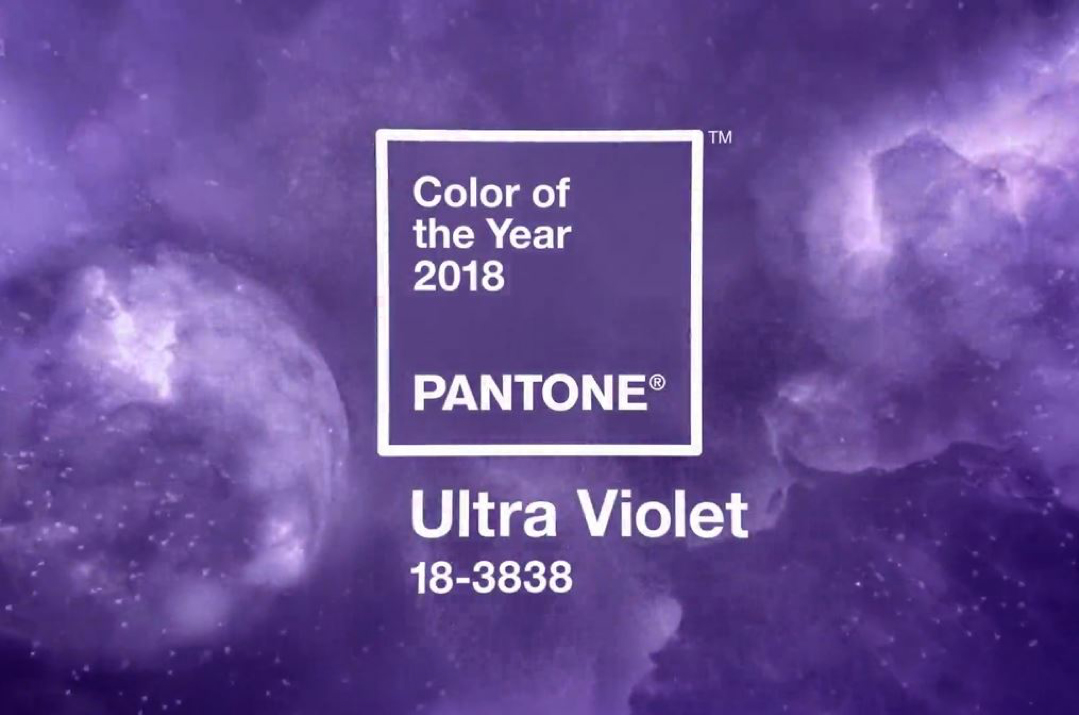

CostueroReal’s handmade cosmic maxi skirt.
Some complementary and secondary color stories in 2018 include:
- dusty desert shades (like the rust tones popular in F/W17 fashion, and yes, Millenial Pink, too)
- radiant citrus
- ultramarine blue
- bright poppy red (an orange-toned version, Tigerlily, is Kona fabrics official color of 2018)
- carmine red
- lilac (cited by retail trend forecaster Edited to be a color to watch in Spring 2018)
Oilslick, opal, and iridescent tones will continue to appear in the home decor, stationery, and gift markets, as “The Unicorn Effect” continues into 2018. Paint companies Benjamin Moore and Sherwin-Williams offered lively choices as their 2018 colors for interiors – Caliente, a vibrant shade of red, and Oceanside, a rich teal hue, are their respective picks.
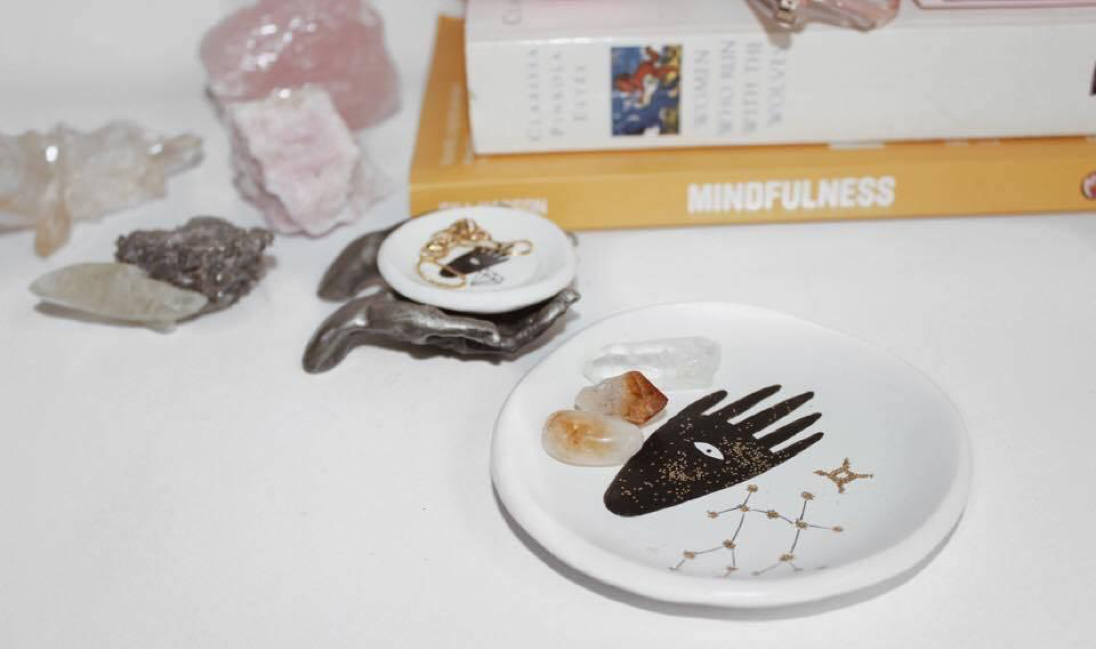
Zodiac trinket dish from Etsy seller Touched By The Moon
Embroidery will continue to be a major trend in fashion in 2018, as retail markets reported a 188% increase in embroidered products in stores during 2017. Retail analysts predict that the trend “will continue into the new year, with a turn towards eighties-inspired imagery, with more animal motifs, stars and emblems.” Artisans have a unique advantage here: the more intricate and high-quality the embroidery design, the less likely it is to be copied. While enamel pins may be on the wane, embroidered patches will pick up the thread of trendy 80’s nostalgia.
Popular craft magazines like and Knit Wit, Koel Magazine, and Pom Pom Quarterly are elevating the conversation around contemporary fiber art, and offer fresh knit and crochet patterns to their subscribers. Recent coverage shows an uptick in innovative techniques, non-traditional materials, and craft informed by social justice movements.
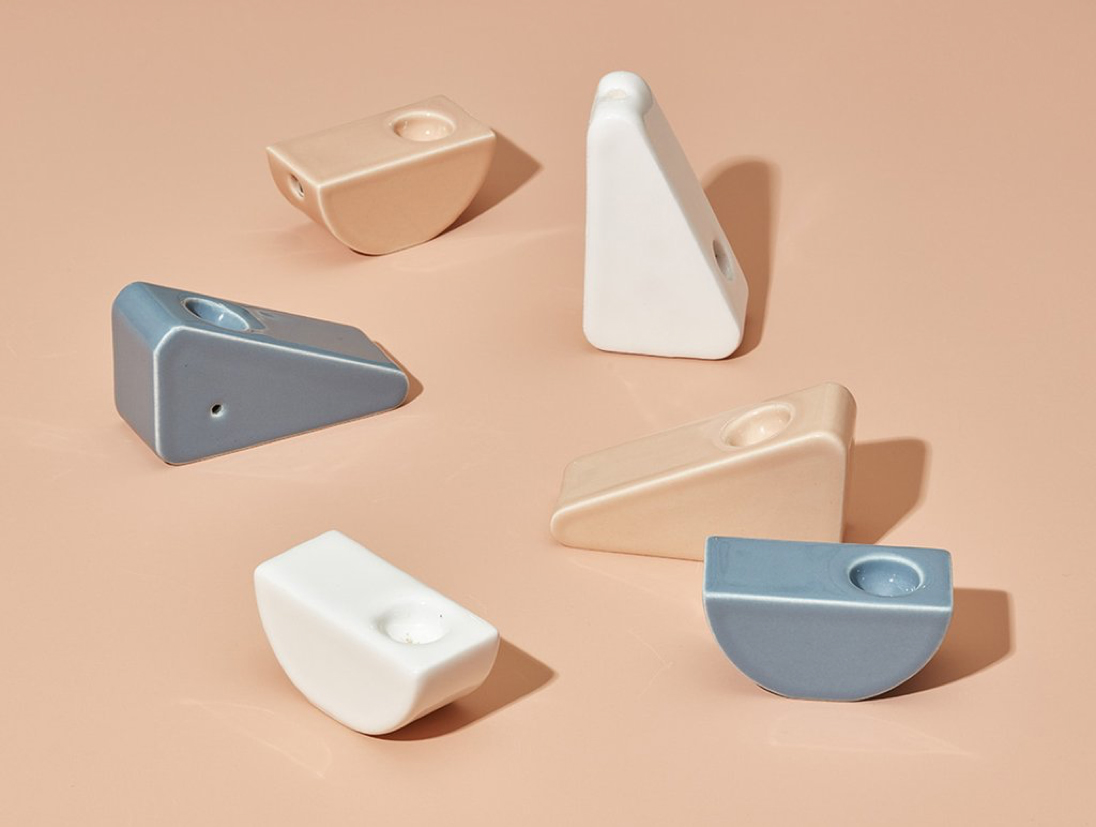
Tetra offers designer-made smoking accessories.
Consumers will notice a shift towards a more holistic approach to wellness products in 2018, including mindfulness and meditation becoming more mainstream. Some scheduled releases from Chronicle Books exemplify this trend: their Unwind Every Day journal, and Mindfulness Cards both fit in with a holistic view of self-care. In a similar vein, Etsy is using holistic marketing language like, “mood-boosting jewelry” to describe items with inspirational quotes on them.
Trends in business
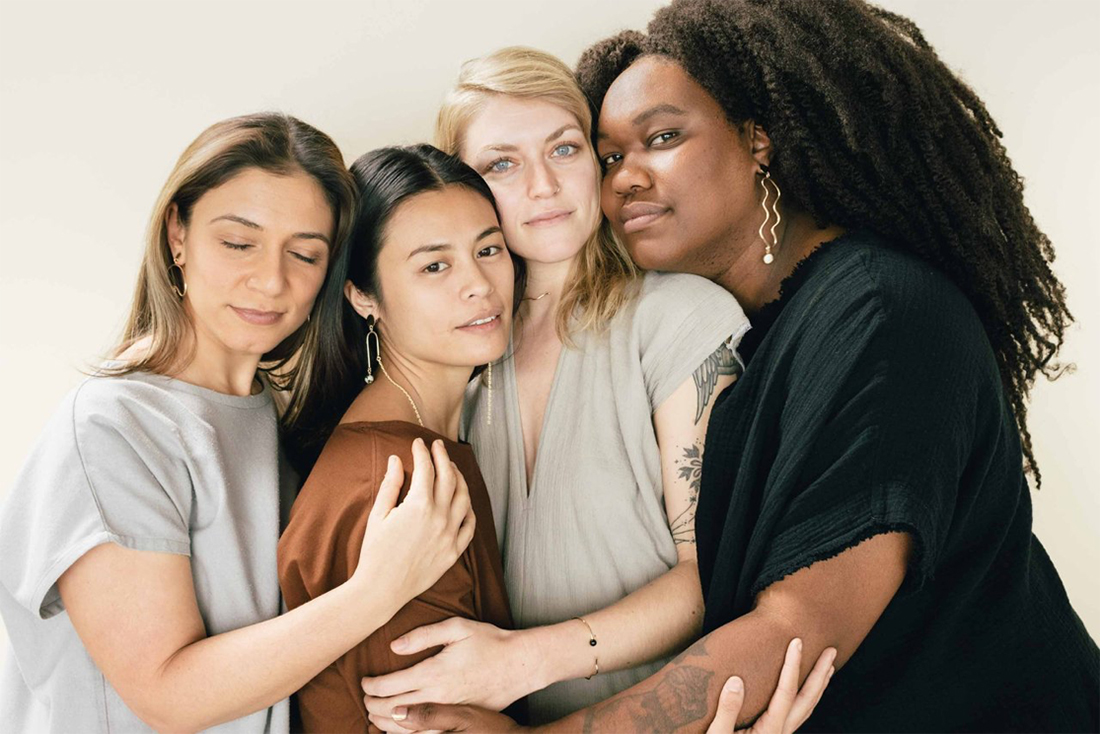
WkndLA‘s recent lookbook, titled “Better Together,” highlights diversity.
If you’re feeling exhausted by your social media feed, you’re not alone. Circa, an alarm clock that prevents you from being tethered to your phone at bedtime, raised over $100K on Kickstarter in November, illustrating that thoughtful unplugging is gaining popularity. Social media fatigue and unplugging will gather steam in 2018, and creatives who rely on social media to reach their customers will need to reinforce their authentic connections with their followers to remain relevant.
Amazon’s dominance has contributed to massive shifts in online shoppers’ expectations. Craft businesses are struggling to offer free shipping, speedy delivery, and easy returns, which online buyers now expect. In 2018, shoppers are predicted to demand even more convenience. We’ll see more AI chatbots aiding the online shopping process, and quick (even same day) delivery becoming the norm. Shopify is clued in to the latter trend, offering shipping integration with Postmates to expedite local deliveries. Etsy also offered this service in 2015, but imposed an additional fee that discouraged shoppers from trying out same day delivery. Indie craft businesses and makers will need to develop strategies to meet consumer expectations without sacrificing their bottom line.
As you reflect on popular trends for 2018, keep the needs of your customers in mind, and look for opportunities to create stories around these themes that could be useful in your PR and marketing. Building a business solely around trends is difficult to sustain, but using them in your product planning can add cultural relevance and connect you with a larger audience.

Moglea‘s cards offer creative encouragement

Erin Dollar
Contributor
Erin is the textile designer and artist behind the home décor company, Cotton & Flax. She licenses her surface designs for fabric, home décor, stationery, and other clients. She’s also a teacher, writer, and enthusiastic advocate for small creative business owners. She lives in San Diego, California.

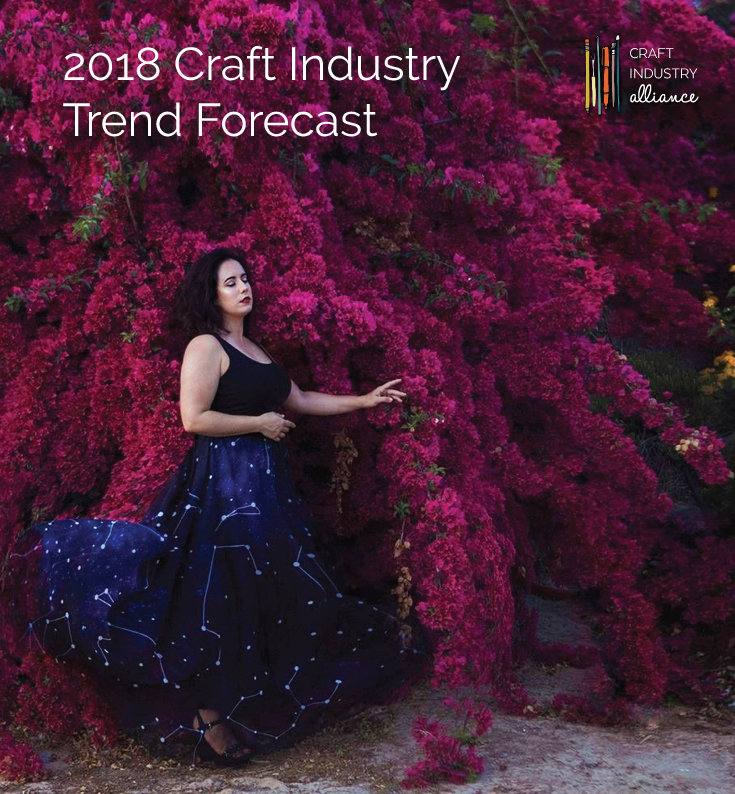
Great article thank you!
Thank you Erin for this informative, concise article. I love the color of the year and your thoughts on creative small businesses / crafting. Happy 2018! 😉